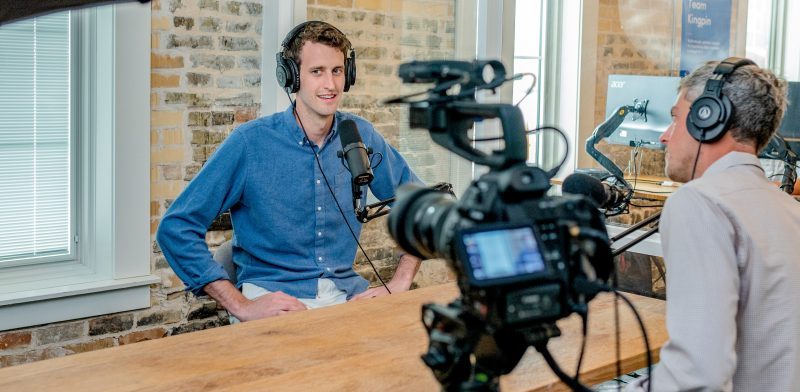 Thanks to technological revolutions, we now have more ways than ever to access information: social media, influencers, podcasts, blogs, videos, apps, infographics and online forums. So. Much. Information.
Thanks to technological revolutions, we now have more ways than ever to access information: social media, influencers, podcasts, blogs, videos, apps, infographics and online forums. So. Much. Information.
Whether it is a graphic, short-form mobile video or 280-character tweet, digital media – which is the combination of content and technology – is driving consumer preference in how they receive their information. It requires creativity and analytical skills, using both the left and the right sides of the brain.
Michael Thai is the digital media specialist at the Institute for Public Strategies. He is the ‘creative’ arm of our work and has never shied away from a challenge that we have thrown at him. (And we’ve thrown him some curveballs!) I wanted to find out about the path that brought him to our organization and his thoughts on digital media.
How did you get started in digital media?
I’ve always enjoyed being creative, from drawing, painting, creating art in general. But the mess, materials and space needed always hindered me from creating. At the same time, I was into computers and eventually, I put things together and started creating on the computer. From there, I went on to get educated in graphic design and digital video production.
You started out in corporate America. What led you to work for a non-profit organization?
I had volunteered in college, and as a professional, I started to think about ways I could contribute to my community. I felt a longing to do work that could potentially help people as well as educate them.
What is your favorite type of digital media?
My interests and favored mediums change daily based on what I want to say or create every day. But generally, my preferred mediums are vector graphics in the form of logos or branding and infographics. I’ve begun to experiment and learn more and more about digital animation and am curious about what I’m able to create in the future.
Why is having a digital media strategy important to an organization?
It is an integral part of the communication strategy of an organization in this digital day and age. Almost everyone is now on some digital platform, and without a digital media strategy, it can be hard to create smart messaging and content that can support an organization’s mission.
Digital media, specifically, can create interest and improve viewership by creating content that is interactive, imaginative and thought-provoking, and it can benefit traditional media. It also allows your audience to have a voice and facilitates participation.
Especially now during COVID, digital media has stood out as a way to reach an audience in a way that you would normally do face to face. E-newsletters, webinars, social media, videos and podcasts are important now more than ever since we are all stuck at home.
What challenges do you see with digital media?
To protect the integrity of the information you are putting out there, verified data is hugely important. These days it is easy to falsify information and it’s easy for people to spread misinformation. When false data is put out there, it can have devastating consequences to our health, our finances and our relationships. We have to be super careful about where we get our information.
What’s in the future for digital media?
We’ll see the evolution of video chats and video information, as indicated by our reliance on Zoom, Google Meet and other video chat platforms during COVID. Over the past few months, we have become more of a work-from-home society, and these platforms are cutting down face-to-face meetings. I think we’ll also see the evolution of virtual classrooms.
What digital media trends do you see for the future?
More tracking of analytics and tailoring content to specific audiences. Customizing content so it aligns with the audiences’ interests.
Meredith Gibson is a GovLoop Featured Contributor. She uses the power of media advocacy and geographic information systems to promote systems and policy changes that contribute to healthy, safe and vibrant communities in San Diego County. Meredith is a media director at the Institute for Public Strategies, a non-profit organization that addresses equity in public health, particularly around substance abuse prevention. She writes news releases, collaborates on opinion editorials and pitches ideas and spokespersons to news outlets, amassing media coverage at the local and national levels. She also authors story maps and analyzes spatial data to inform policy decisions.





Leave a Reply
You must be logged in to post a comment.